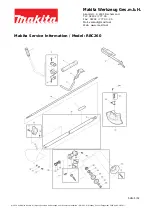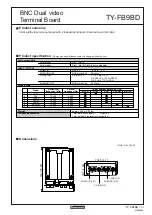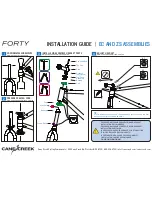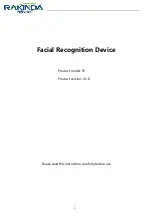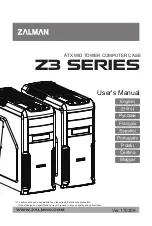
Q01-4000
Rev G Page 7 of 28 Teledyne Battery Products
COMPONENT MAINTENANCE MANUAL
Pre
mi
um
LT
V
alv
e R
eg
ula
te
d L
ea
d A
cid
Airc
ra
ft B
att
erie
s B
y TE
LED
YN
E
BA
TTE
RY
P
RO
D
UC
TS
logged on the outer package or marked on the battery. The inspection intervals
for these batteries will be the same as outlined in section. See Figure 1, for state
of charge at various voltages.
4.3.5
Long term storage at temperatures less than 0°F (-18°C) will not detrimentally
affect the life of the battery, provided the battery is at a reasonably high state of
charge (over 80%) before placing in storage. The battery may be stored at lower
temperatures, but will need to be warmed up to 0°F (-18°C) before use.
4.3.6
Please call TBP technical support if there are any questions regarding shelf life
and recharge periods.
4.4
INITIAL INSPECTION
4.4.1
Visually inspect the battery to ensure there is no damage. Remove the
protective cap over the terminal pins and ensure that the pins are clean and there
is no corrosion. The pins have been installed with the correct torque at the
factory and do not require any re-seating. Call TBP Technical Support if you find
any discrepancy.
4.4.2
DO NOT remove the lid. The vents are sealed in the cover and cannot be
removed for maintenance.
4.4.3
Inspect the open circuit voltage and review handling requirements, according to
the measured voltage, per Section 5.5. Before placing the battery in service, it
must be fully charged. Review Section 5 as needed.
For basic charging, constant potential is the preferred charging method. Deep-
discharge recovery will usually require application of Constant-Current and/or
Constant-Potential charging (see Sections 6.3 and 6.4). If there are any concerns
with recharging, please contact Tech Support at Teledyne Battery Products.
WARNING
ALL VRLA batteries contain sulfuric acid, which is highly corrosive and which can
cause serious physical injury if it comes in contact with skin or if inhaled. It can also
cause serious eye injury or blindness if it comes into contact with the eyes.
Caution must be exercised to avoid damage to the exterior case which could allow
the contents to escape or come in physical contact with external materials or
personnel.
If a battery case is found to be damaged, handle the battery with care and avoid
contact with the skin. Inspect all areas adjacent to the battery for evidence of
corrosion.

























